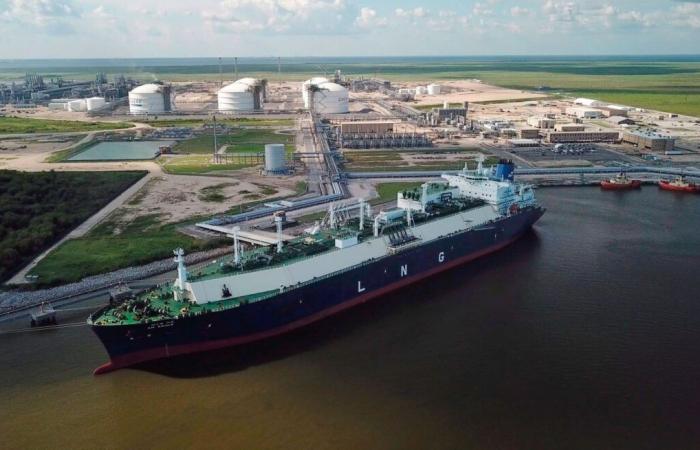The Government of Canada will have to defend its decision to reject the GNL Québec project. The promoters of the defunct gas complex have in fact launched international action to obtain at least one billion dollars in financial compensation. A hearing is scheduled for next year in this case, which directly attacks the environmental assessments that led to the refusal of the controversial project.
It was the American company Ruby River Capital which last year filed a request for “arbitration” from the International Center for Settlement of Investment Disputes (ICSID) of the World Bank Group, on behalf of Symbio Infrastructure, the umbrella entity GNL Québec and Gazoduq.
The hearing is now scheduled for December 2025, with several preliminary steps planned over the next year. The federal government has tried, in recent months, to have the arbitration request rejected, but in vain. According to what Ottawa indicates, the amount claimed would be one billion US dollars “for irrecoverable costs and loss of future profits, in addition to losses (to be quantified), interest and costs”. This equates to at least 1.4 billion Canadian dollars.
This controversial project for the liquefaction and export of natural gas from Western Canada would have required the construction of a 780-kilometer gas pipeline, but also a factory located on the Saguenay and a maritime terminal. There was talk of producing 11 million tonnes of liquefied natural gas (LNG) each year, which would have required hundreds of LNG tanker passages in the Saguenay–St. Lawrence marine park.
However, at the end of the environmental assessment processes of Quebec and Canada, the two levels of government rejected the project, respectively in 2021 and 2022. Despite this, Symbio Infrastructure and GNL Quebec are still registered in the Quebec Business Register . All directors are based in the United States.
“Discriminatory”
The promoters of GNL Québec have not digested the refusals of their project and they claim, in the documents filed with the ICSID, that they have lost “no less than 20 billion US dollars”, or 27 billion Canadian dollars. They also believe that the fact of having blocked their “investment” constitutes “a violation” of free trade rules.
Above all, American investors severely criticize the environmental assessment of their project. They say they have been victims of “arbitrary, unfair and discriminatory treatment”, particularly on the part of Ottawa, which has approved other LNG export projects, including LNG Canada, which is twice as large as LNG Quebec. The documents also mention the approval of the Bay du Nord megaproject.
They accuse the Legault government of having “illegally exploited” the environmental process in order to respond to “its agenda policy “. Their plea directly criticizes the Office of Public Hearings on the Environment, which is accused of having conducted “biased” hearings leading to the drafting of an equally “biased” report, particularly with regard to to “speculative claims” regarding greenhouse gas emissions attributable to the project.
According to the schedule available on the ICSID website, the hearing is scheduled for December 2025, with several preliminary stages planned over the next year. The federal government has tried in recent months to have the arbitration request rejected, but in vain.
Greenhouse gases
In its argument submitted earlier this year, Ottawa emphasized that “these infrastructures would not only have sustained the emission of large quantities of greenhouse gases for a period of 25 to 50 years, but that they would also have required the passage of tankers in a critical area of critical habitat for the beluga whale, Canada’s iconic marine mammal, which is unfortunately endangered.” Environmental assessments confirmed “significant adverse environmental effects,” which motivated the refusals.
The federal government also argued that the promoters had “no acquired rights” to carry out their project, into which they injected $120 million. The document also emphasizes that this sum represents “at most 1% of the total amounts required” to build the entire gas complex.
In a document filed by the Quebec government at the ICSID and demanding the right to intervene in the debate, it is also said to fear having to disburse funds in the event of a conviction by the federal government in this case.
“The project in question polarized public opinion, in particular because of its impacts on global greenhouse gas emissions, on beluga populations and because it involved the construction of a gas pipeline. 780 km long, which would have crossed hundreds of wetlands and bodies of water as well as the territory of several indigenous communities and that of multiple protected and threatened species,” recalls this same document.
“Quebec respected its environmental laws in the matter and had the right not to wish to move forward with the project. As the case is pending in court, we do not [le] we will not comment further,” indicated the office of the Minister of the Environment of Quebec, Benoit Charette, in a written response to questions from the Duty.
The Quebec Environmental Law Center recently asked the ICSID for authorization to intervene by filing a brief arguing that the decision to refuse the construction of the gas complex respects the “precautionary principle”. “The precautionary principle applies when three conditions are met: there is scientific uncertainty, there is the potential for serious or irreversible harm to the environment, and there are reasonable grounds for concern,” explains lawyer Marc Bishai.
The office of the federal Minister of the Environment, Steven Guilbeault, redirected questions from Duty towards the Impact Assessment Agency of Canada, which produced a very critical report. She had not responded to our questions at the time this text was published.
If Ottawa refused the GNL Québec project, it nevertheless approved last year the Cedar LNG project (annual production of 3.3 million tonnes of LNG), in addition to LNG Canada (annual production of 14 million tonnes of LNG ). In both cases, the liquefaction complexes will be supplied mainly by gas exploited by fracturing.






